Korea’s beef safeguard triggered – has it affected demand?
Key points
- Korea’s beef safeguard was triggered on 12 September, raising the import duty on Australian beef from 8% to 24%.
- Demand for Australian beef in Korea has remained resilient, driven by consumer awareness, reduced domestic supply and increased consumer spending.
- Expected increases in sales across channels is expected with the upcoming Chuseok (Golden Holiday) season.
Demand for imported beef in Korea has remained resilient despite cost-of-living pressures. Korea is Australia’s fourth-largest beef export market this year1. This strong demand, however, triggered Korea’s beef safeguard six weeks earlier than last year, raising the import duty to 24% for the remainder of the 2025 calendar year.
What does this mean for Australian beef exports to Korea?
Australia was eligible to export 192,206 tonnes shipped weight (swt) of beef to Korea at an 8% duty in the 2025 calendar year under the Korea-Australia Free Trade Agreement (KAFTA). However, this quota was adjusted to 170,659 tonnes swt due to an excess of 21,547 tonnes swt carried over from 2024, when the safeguard was triggered in late October.
The 24% tariff, effective from 12 September 2025, places Australian beef at a disadvantage to o United States' product, which has a 2.6% tariff under the US-Korea Free Trade Agreement.
What’s driving demand resilience for Australian beef in Korea?
While the safeguard trigger presents challenges for Australian beef exports, Korea’s demand for Australian beef is underpinned by three key factors:
- Reduced domestic supply: Korea’s domestic Hanwoo slaughter has been subdued year-to-date1, resulting in Australian beef exports to Korea rising 11% in volume and 23% in value2.
- Strong consumer demand: Australian beef is well-regarded by consumers in Korea where it enjoys the highest consumer awareness compared to other key export markets. The ‘Aussie beef’ brand is well-known for its strong associations with trust, sustainability and animal welfare.
|
Markets with higher Awareness |
Markets with lower Awareness of Australian beef |
||||
|
77% |
75% |
66% |
64% |
13% |
6% |
|
Korea |
UAE |
Indonesia |
Japan |
US |
UK |
Source: MLA Global Consumer Tracker 2025
- Increased consumer spending: To combat cost-of-living pressures, the government has rolled out stimulus measures to incentivise domestic consumption and revitalise the economy3. This has positively impacted beef demand, particularly in foodservice.
The uptick in spending is reflected in foodservice trends where value-added offerings are gaining traction by appealing to consumers who seek a balance of indulgence and affordability. All-you-can-eat shabu shabu (sliced meat in clear hot pot broth) restaurants that offer an array of meats, vegetables and side dishes appeal to health-conscious consumers as well as those seeking customisable and value-driven experiences. Popular beef cuts like chuck roll and brisket showcase Australian beef’s versatility in these establishments.
The approaching Chuseok holiday long weekend over 6–8 October and additional public holidays on 3 and 9 October are expected to drive retail and foodservice activity increases.
Information is correct at time of publishing on 19 September 2025
Attribute to MLA Market Insights Analyst Lily Yuan



